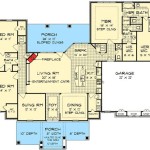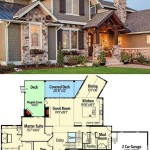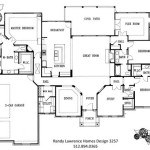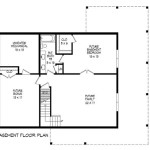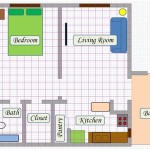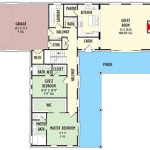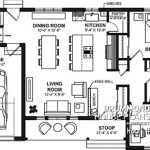Beach House Plans: Exploring the Possibilities of Three-Story Designs
Beach house plans for three-story structures represent a significant investment and a commitment to maximizing coastal living. These plans offer more than just increased square footage; they provide opportunities for superior views, enhanced privacy, and flexible living arrangements suitable for large families, frequent guests, or potential rental income. The design and construction of a three-story beach house require careful consideration of various factors, including local building codes, environmental regulations, and the specific characteristics of the chosen site. This article examines key considerations involved in selecting and implementing three-story beach house plans.
Maximizing Views and Natural Light
One of the primary motivations for choosing a three-story beach house plan is the opportunity to capture expansive views of the ocean or surrounding coastline. The height advantage allows for unobstructed sightlines, potentially extending for miles. Architects designing these structures often prioritize strategically placed windows and balconies to optimize the visual connection with the natural environment. The placement of living areas on the upper floors is a common strategy, situating spaces like the living room, dining room, and kitchen where they can benefit from the best views. Furthermore, incorporating floor-to-ceiling windows and sliding glass doors can flood the interior spaces with natural light, reducing the need for artificial illumination and creating a bright and airy atmosphere.
The orientation of the house on the lot is also critical. Factors such as the direction of prevailing winds, the path of the sun, and the location of existing vegetation or neighboring structures must be considered to maximize sunlight exposure while minimizing glare and heat gain. Some designs incorporate large overhangs or strategically placed awnings to provide shade and control the amount of sunlight entering the building. Porches and balconies are not only visual extensions of the living space, but also offer opportunities for outdoor relaxation and enjoyment of the coastal breeze. The design of these outdoor areas should complement the overall architectural style of the house and be integrated seamlessly into the floor plan.
Beyond the architectural considerations, the selection of appropriate window materials is important. High-performance glass with low-E coatings can help to reduce heat transfer and energy consumption, while impact-resistant glass is essential in areas prone to hurricanes or severe storms. The use of skylights can also bring natural light into interior spaces, such as hallways or bathrooms, that may not have direct access to windows. However, careful planning is necessary to ensure that skylights do not create excessive heat gain or leak over time.
Addressing Structural and Environmental Challenges
Building a three-story structure near the ocean presents unique structural and environmental challenges. Coastal areas are often subject to strong winds, salt spray, and the potential for flooding, all of which can degrade building materials and compromise structural integrity. Therefore, it is imperative to use durable, weather-resistant materials and construction techniques that can withstand the harsh coastal environment. This includes the use of treated lumber, corrosion-resistant fasteners, and weather-resistant siding and roofing materials.
The foundation of a three-story beach house is particularly critical. Depending on the soil conditions and the potential for flooding, different foundation types may be appropriate. Pile foundations, which involve driving long columns into the ground to support the building above flood level, are commonly used in coastal areas. Slab-on-grade foundations, which are concrete slabs poured directly on the ground, may be suitable in areas with stable soil and low flood risk. Raised foundations, which elevate the building above ground level using concrete piers or walls, are another option for mitigating flood risk and providing access for utilities.
Building codes in coastal areas often require compliance with specific regulations related to wind resistance and flood protection. These regulations may dictate the type of materials used, the method of construction, and the minimum elevation of the lowest floor. It is essential to consult with local building officials and engineers to ensure that the design meets all applicable codes and standards. Furthermore, environmental considerations should be integrated into the design process. This may involve implementing measures to protect coastal habitats, reduce stormwater runoff, and conserve water and energy.
The impact of wind loading on a three-story structure is significant. The design must account for the potential for high winds to exert pressure on the walls and roof of the building. This requires the use of reinforced framing, hurricane straps, and impact-resistant windows and doors. The roof design is particularly important, as it is the most vulnerable part of the building during a storm. Steeply pitched roofs are more susceptible to wind damage than flatter roofs, and the choice of roofing material can also affect the building's wind resistance.
Optimizing Interior Space and Functionality
A three-story beach house plan offers ample opportunity to create a functional and comfortable living space. The design should consider the needs of the occupants and the intended use of the house. Common features include multiple bedrooms and bathrooms, a spacious living area, a well-equipped kitchen, and outdoor living spaces such as decks and balconies. The layout should be intuitive and efficient, with clear circulation paths and well-defined zones for different activities. The location of the stairs is crucial, as they provide the primary means of vertical circulation between the floors. The stairs should be designed to be safe and comfortable, with adequate headroom and handrails.
The interior design should complement the coastal environment and create a relaxing and inviting atmosphere. Light and airy color palettes, natural materials, and comfortable furnishings are often used to evoke a sense of tranquility. The use of large windows and sliding glass doors can blur the line between indoor and outdoor spaces, creating a seamless connection with the natural environment. The inclusion of amenities such as a home theater, a game room, or a private office can enhance the enjoyment of the house. The integration of smart home technology can also improve convenience and energy efficiency.
Accessibility should also be addressed. While not always required, considering the potential needs of elderly or disabled occupants is prudent. This can involve incorporating features such as ramps, elevators, and wider doorways. Universal design principles, which aim to create spaces that are accessible to people of all abilities, can be incorporated into the design without compromising the aesthetic appeal of the house. Furthermore, energy efficiency should be a priority in the design. This can involve the use of high-performance insulation, energy-efficient appliances, and renewable energy sources such as solar panels. The orientation of the house, the selection of window materials, and the design of the ventilation system can all contribute to reducing energy consumption.
Storage is often a critical consideration in a beach house, where space may be at a premium. Ample storage space should be provided for beach gear, outdoor furniture, and other seasonal items. Built-in storage solutions, such as custom cabinets and shelving, can maximize the use of available space and keep the house organized. The design should also consider the potential for rental income. A well-designed beach house can be a valuable investment, and the ability to rent it out during periods of non-occupancy can help offset the cost of ownership.

Beach House Plan Caribbean Home Floor 3 Story Plans Coastal

South Florida Design Beach Style 3 Story House Plan

Mediterranean House Plan 3 Story Luxury Beach Home Floor Plans

3 Story Coastal Style House Plan Tiger Beach Floor Plans

Plan 058h 0023 The House

Plan 058h 0018 The House

Beach House Plan 3 Story Tropical Caribbean Home Floor Plans Small

Schooner Bay Coastal House Plans From Home

3 Story Shingled Beach House Plan 31508gf Architectural Designs Plans

3 Story Beach House Plan Siesta Key Virtual Tour

